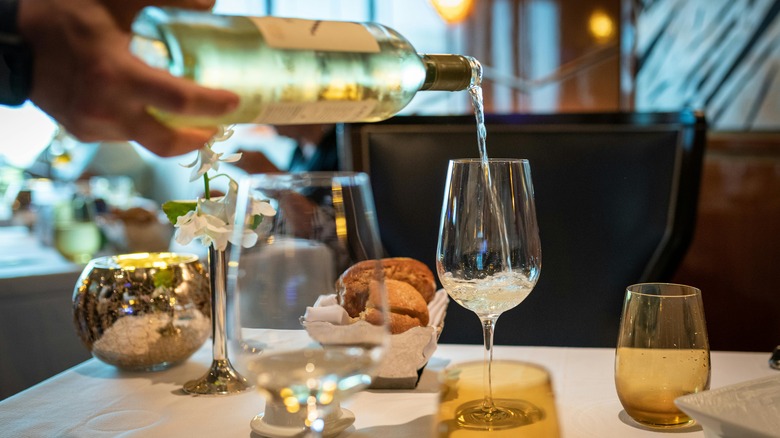The Fine Dining Bread Rule You've Probably Broken Before
We may receive a commission on purchases made from links.
The significance of etiquette in fine dining transcends mere table manners; it's a language, a collection of unspoken cues, and a show of appreciation for the culinary craft. In fine dining restaurants, etiquette plays a pivotal role, from the palate cleanser to after-dinner drinks. Whether it's the proper use of cutlery, the discreet signaling for service, or the graceful act of savoring each bite, this tacit set of guidelines guides patrons through their meal.
The bread basket itself has a short list of associated rules and represents an opportunity to impress fellow diners with your manners. There is one bread rule you've probably overlooked, though, and it has to do with the buttering method. If your regular practice is to grab a dinner roll, slice it in half, slather each side with butter from the communal dish, and take bites as you go, you're breaking a cardinal rule, according to Maggie Oldham, a modern etiquette coach. The proper way to eat bread at a fine dining establishment is to first put a small amount of butter on your bread plate using a butter knife. Select a roll and, when you're ready for a bite, break off a bite-sized piece, butter only that bite, and enjoy. This way, you're avoiding a mess of butter potentially ending up on your face and hands, Oldham explains. This rule applies for most companion carbs, including croissants or muffins. You can, however, butter a whole piece of toast for breakfast and eat it without going piece by piece.
Other bread etiquette rules
You might be surprised to learn that there are a number of rules for carb lovers to follow when it comes to digging into that bread basket at a fancy restaurant. For example, when attending a formal dinner, don't go reaching for a roll as soon as they hit the table. Bread isn't a course and should only be enjoyed concurrently with the first course, not before.
There's also an understood order for serving slices of bread from the basket. When the basket is set on the table, either the host or the person closest to the basket should begin circulating it to the right, serving themselves last. If the bread arrives uncut, the host or person closest to it should use the napkin liner to handle the bread while they slice it into pieces. They should offer a slice to the person on their left, then take a piece for themselves, then continue to circulate the basket to the right and around the table.
Where do fine dining rules come from?
What is thought of now as a collection of unwritten rules actually started out in writing. There were mentions of table settings and social rituals in the writings of the ancient Greeks, as well as in the Old Testament and 11th-century writings in Europe.
"Mrs. Beeton's Book of Household Management," written in 1861, is one tome well-known on the etiquette circuit for its descriptions of life in Victorian Britain. It contained many recipes as well as advice on manners. For example, Mrs. Beeton wrote that "it is generally established as a rule, not to ask for soup or fish twice, as in so doing, part of the company may be kept waiting for the second course."
But even before that, in the time of knights and kings, dining etiquette was a mark of respect. "The Book of Curtesye" in 1477 and "The Courtier" in 1528 both outlined how ladies and lords should behave in court, like recommending the washing of hands before a meal.


